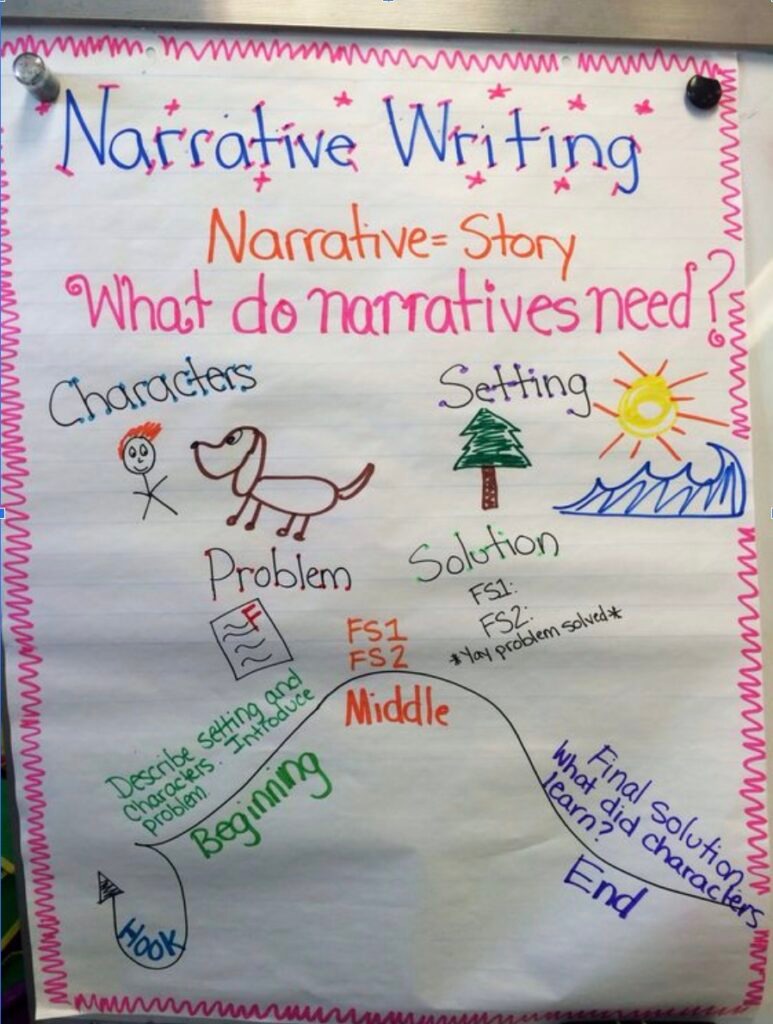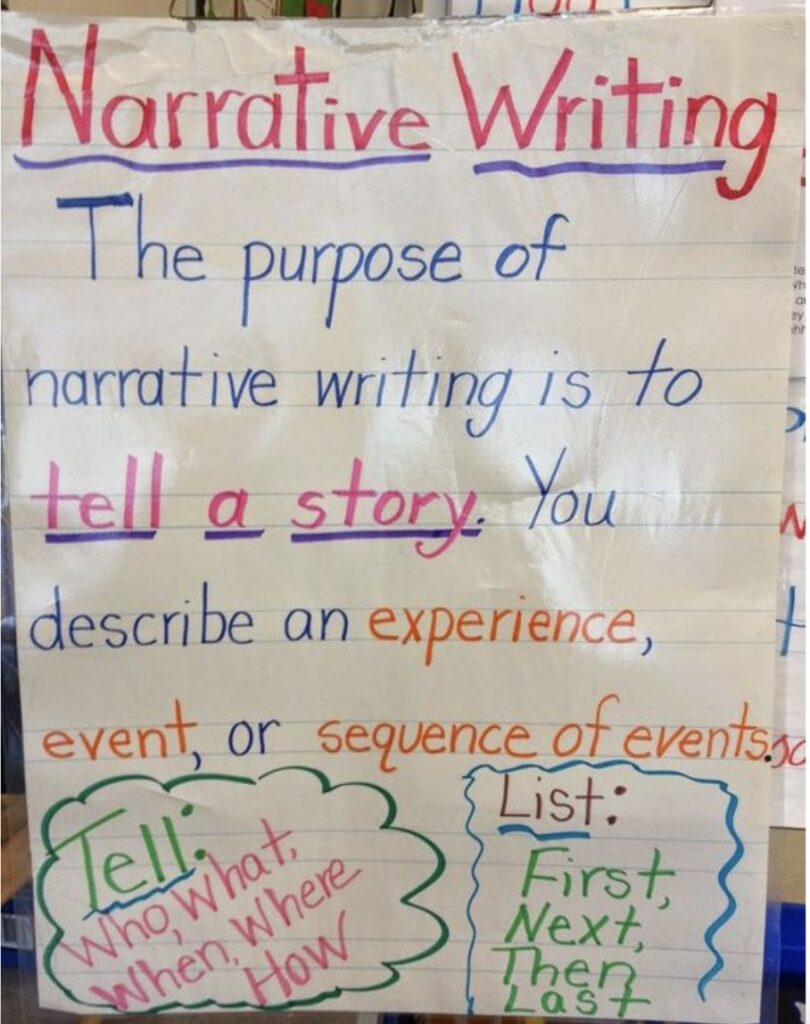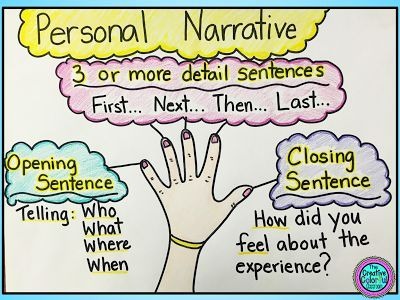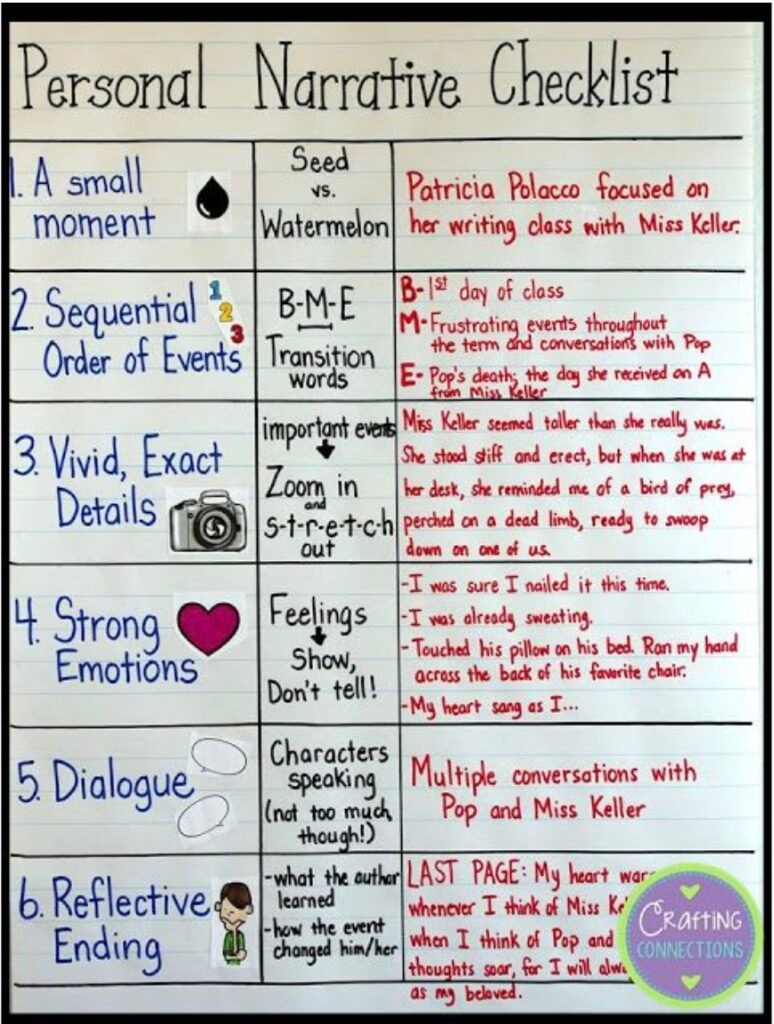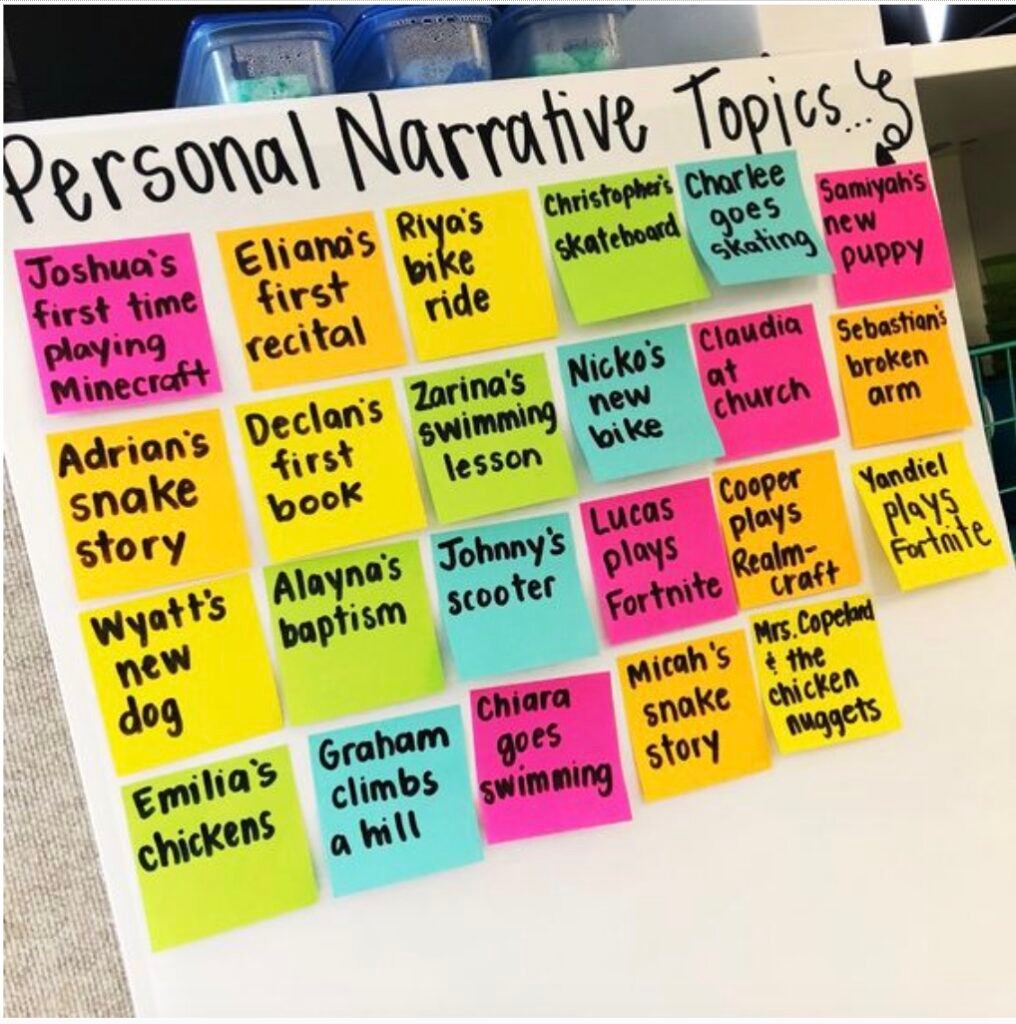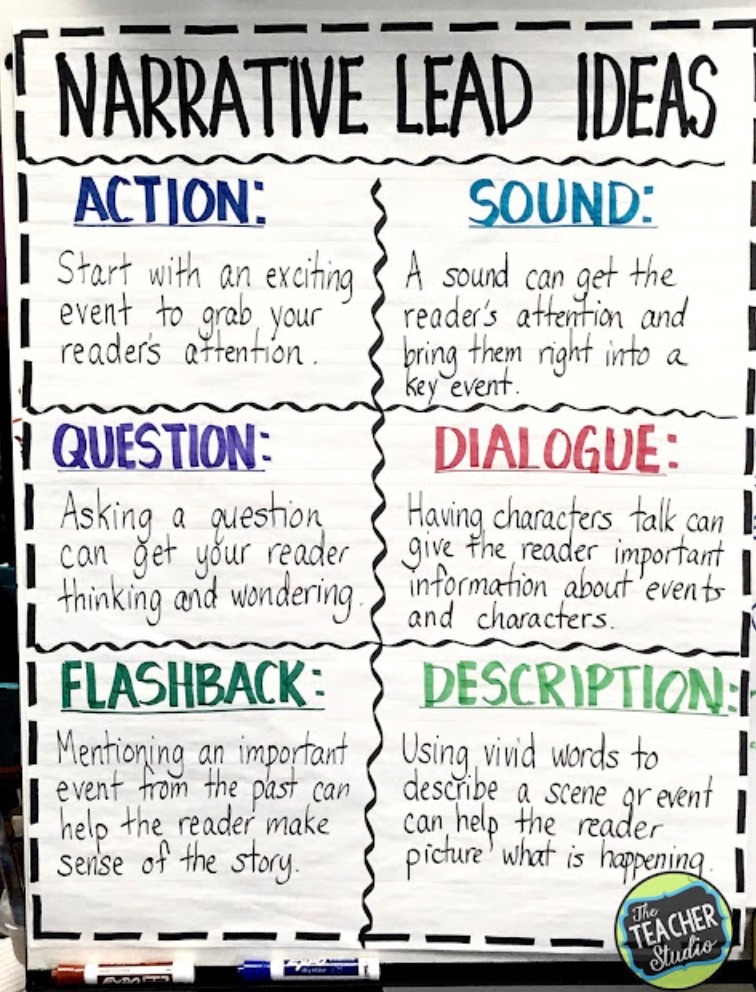‘I want to tell you a story…’ or ‘Once upon a time…’ These familiar phrases have opened many a story – and will continue to do so. What happens after the opening line is what creates the narrative.
In this post, I’ll discuss what goes into a good narrative writing anchor chart. I’ve also listed some useful resources and given you some ideas on how to use narrative anchor charts in your classroom.
Table of Contents
- What should go into a good narrative writing anchor chart
- Teaching narrative writing in different ways
- Useful resources from Teach Simple
- Thoughts to take away
What should go into a good narrative writing anchor chart
Narrative writing is telling a story. And this is often the most difficult thing to write, partly because there are so many options. It’s also easy to write a story that just ‘goes’. Writing a good, solid narrative depends on a structure that carries the story, which is not always easy to achieve.
This is where a good narrative anchor chart comes in. If you present your students with anchor charts that give them the guidance about topic, structure and writing techniques, you will be giving them the key to telling stories that have impact.
A good narrative anchor chart should include:
- An outline of the overall structure of beginning, middle and end that makes a good story.
- An explanation of the internal structure of a good story: hook, problem, action, climax, solution.
- A clear statement of the elements one needs in a narrative: characters, problem/s, setting, solution.
Some narrative anchor charts can give ideas for topics, or guidance about finding a topic.
To be effective, a good narrative anchor chart must set the information out logically. This is so the students can see the elements they need to be working on clearly. The chart must also use colors, fonts and pictures to attract and hold the students’ attention.
Teaching narrative writing in different ways
Narrative writing as a broad concept is quite specific. However, when you get down to the nitty gritty of it, there are a whole lot of ways of going about writing a good narrative. Everything does come down to the basic elements of structure and technique.
Take just the idea of the beginning, middle and end structure. You can use anchor charts to teach this in different ways.
Divide the chart into three sections, with the headings ‘Beginning’, ‘Middle’ and ‘End’. Take a very simple story and write the relevant parts in each block. This will demonstrate the idea of structure clearly with a specific example.
You can also find a story the students know. Write it on an anchor chart, but leave out the ending. Ask the students what is missing and what they think of the story. Then you can get them to add their own endings. You can repeat the process, by leaving out the beginning and even the middle. From these exercises, you can create your own anchor chart about the basic structure of a narrative.
Useful resources from Teach Simple
9+ Narrative Anchor Chart for Inspiration
- Narrative Writing Prompt Sheets By Teach Me This
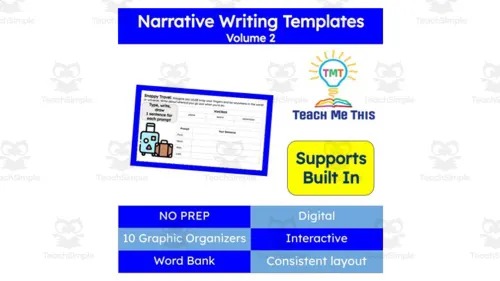
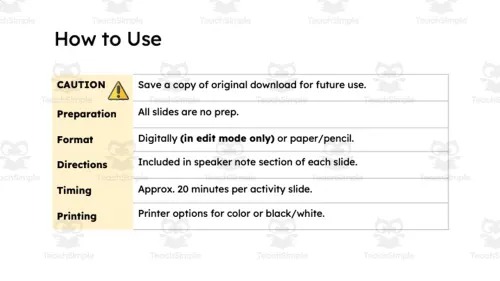
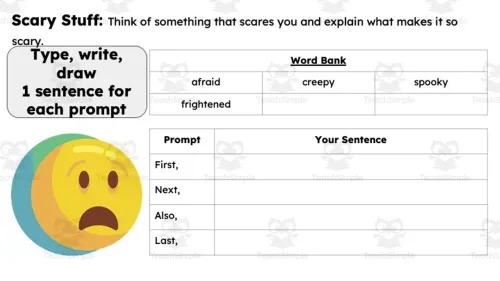
This resource is a set of narrative writing prompt sheets. I’ve included them as a resource because they are a good, solid introduction to writing narratives. You can easily adapt them to become anchor charts. I suggest working through a few with the class so the students understand the principle. You can then extend this to get them to work on their own with worksheets based on the anchor chart.
- Anchor Charts For Writing By Socially Skilled Kids
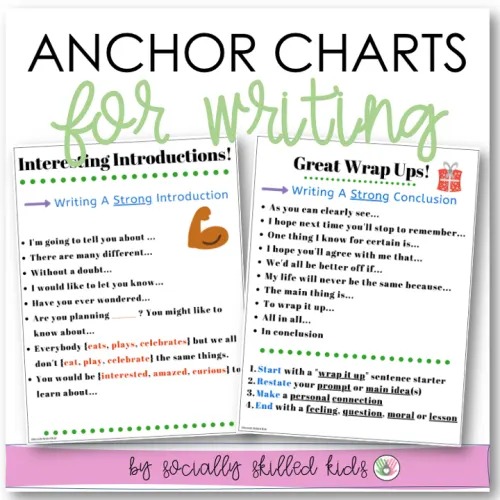
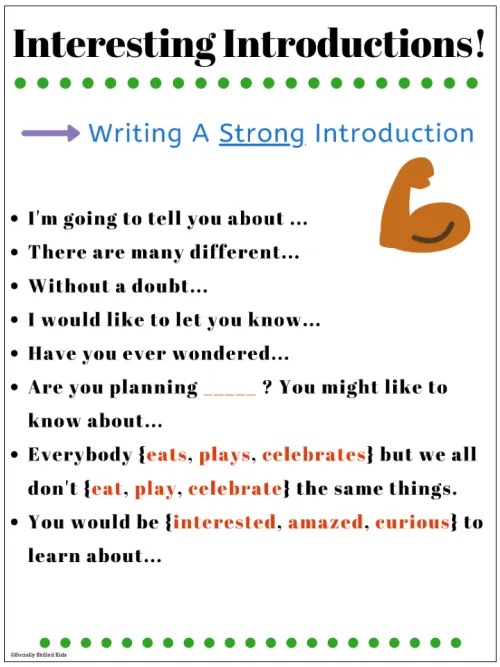
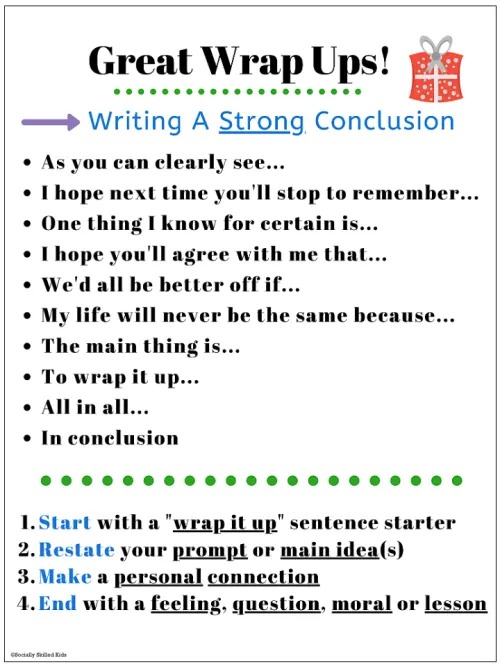
This is a set of Anchor charts for writing. The charts are poster-sized, so they will make great resources for displaying in your classroom. The content of the charts presents the rules of writing and gives the students ideas for approaching writing. There are also writing prompts for different tasks.
- What Do Narratives Need From Puzzle Online
This anchor chart considers What do narratives need? This is a really nice, simple beginning anchor chart for teaching how to tackle a piece of narrative writing. I suggest using it as a basis to look at and discuss examples of narratives. This will help the students to understand what they are aiming for. The image of the ‘hook’ is something students do need to take on board and be able to apply in any writing they do.
- The Purpose Is To Tell A Story By A First For Everything
This anchor chart supposes that narrative writing is to tell a story. This is an idea the students will understand and gives them a focus to come back to. You can also use it to develop their narrative writing step-by-step. Begin with small stories, then develop into writing longer ones. When you work on your own anchor chart, I suggest leaving more space in the lower half, so that the information is not quite so squashed. You can also add some more guiding words and phrases.
- Personal Narrative From The Creative Colorful Classroom
This chart focuses on writing a Personal Narrative. There is a simple technique used to give students guidance when beginning to write a personal narrative: using their hand to remember the points. You could extend the ideas from this chart to relate to the overall piece of writing, and to approaching individual paragraphs.
- Narrative Writing Structure By Elementary Nest
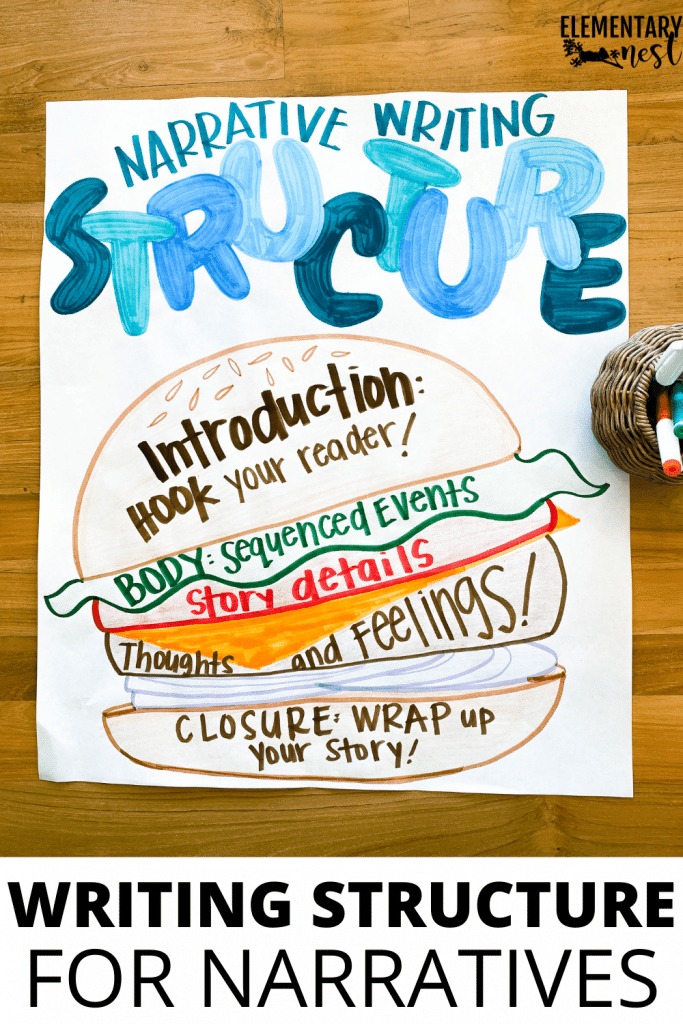
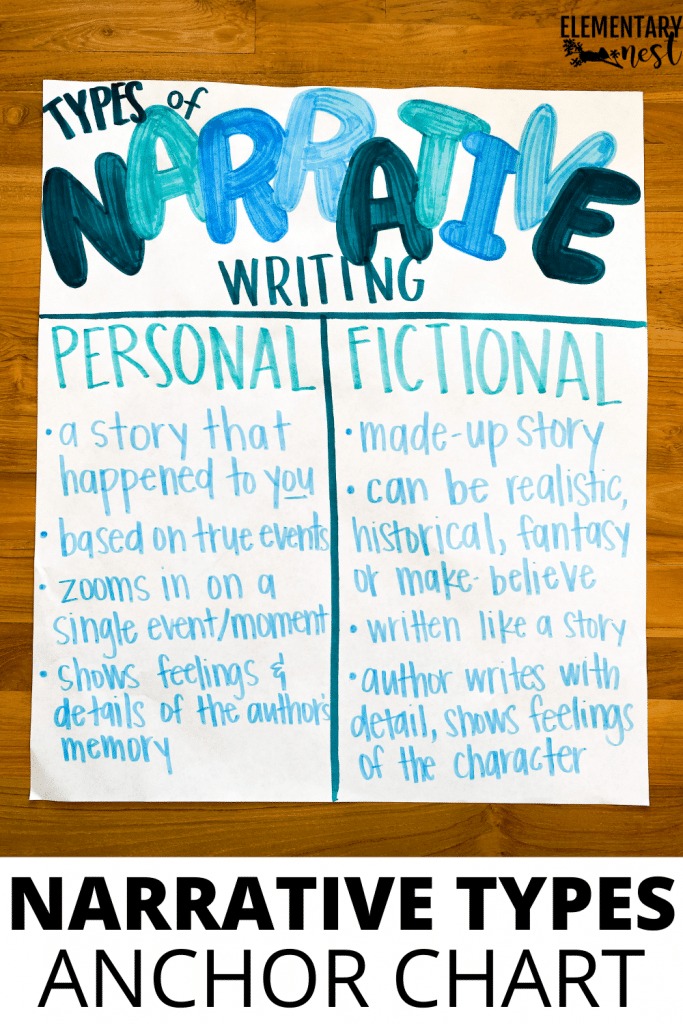
This chart presents the Writing Structure for Narratives. It’s based on the premise that any writer needs to understand what ‘narrative writing’ is before embarking on a writing project. The image of the hamburger to represent the writing is something the students can relate to. If you are creating your own resource, I suggest working with the students to build the ‘hamburger’ layer by layer.
- Personal Narrative Checklist From BlogLovin
This anchor chart gives students a Personal Narrative Checklist. It is presented as a list of how to check you have done everything in the text. It can also act as a blueprint for a piece of writing. I suggest using the sections of the chart as a template. Build up the content with the students, based on a story you create. Give the students worksheets based on the chart and they can develop their own stories on them.
- Topics For Narrative Writing By True Life I’m A Teacher
The chart is based on the premise that writers need Personal Narrative Topics. Deciding on a topic is the first step in successful writing. It’s also often the most difficult. This anchor chart is a great way to help students find the inspiration for their writing. The beauty of using the post-it notes is that you can elicit ideas from the students and build, change and adapt your own anchor charts with them.
- Narrative Lead Ideas By The Teacher Studio
This anchor chart presents starting points for writing, with narrative lead ideas. Using this chart will help your students understand that writing is not only about a basic premise, or characters, it is about using the narrative to catch and keep the reader’s attention. The layout of the chart in blocks makes the information clear for the students. I suggest using this chart in sections – begin with a block at a time. Perhaps you could do this in isolation, then work to build the anchor chart. You can display the final chart in your classroom.
Thoughts to take away
A narrative anchor chart can be the first moment in writing a narrative. It helps the students to learn about the structure and elements they need. You should find or create anchor charts that will help your students craft their narratives. That way, they will have the most impact.

